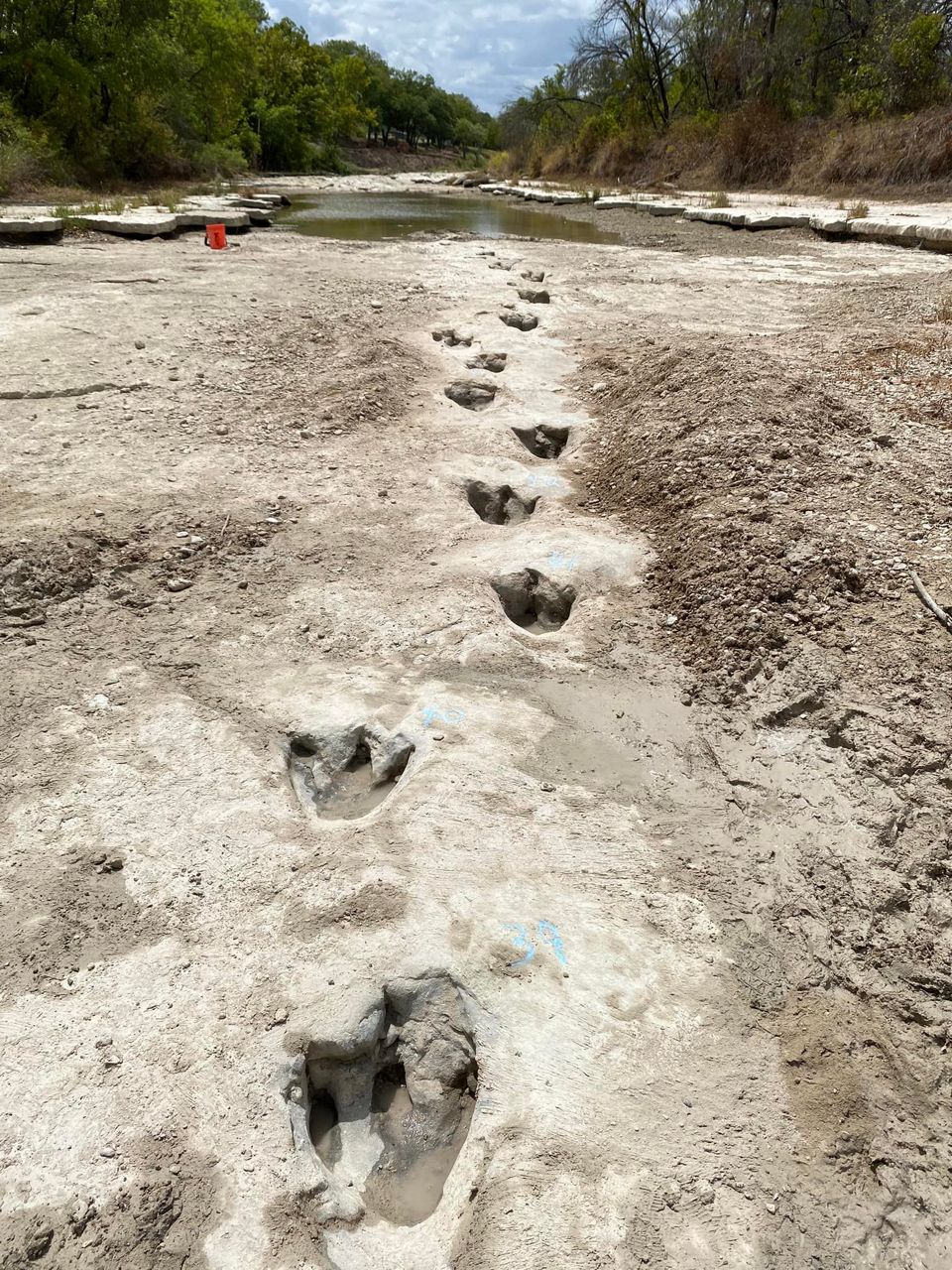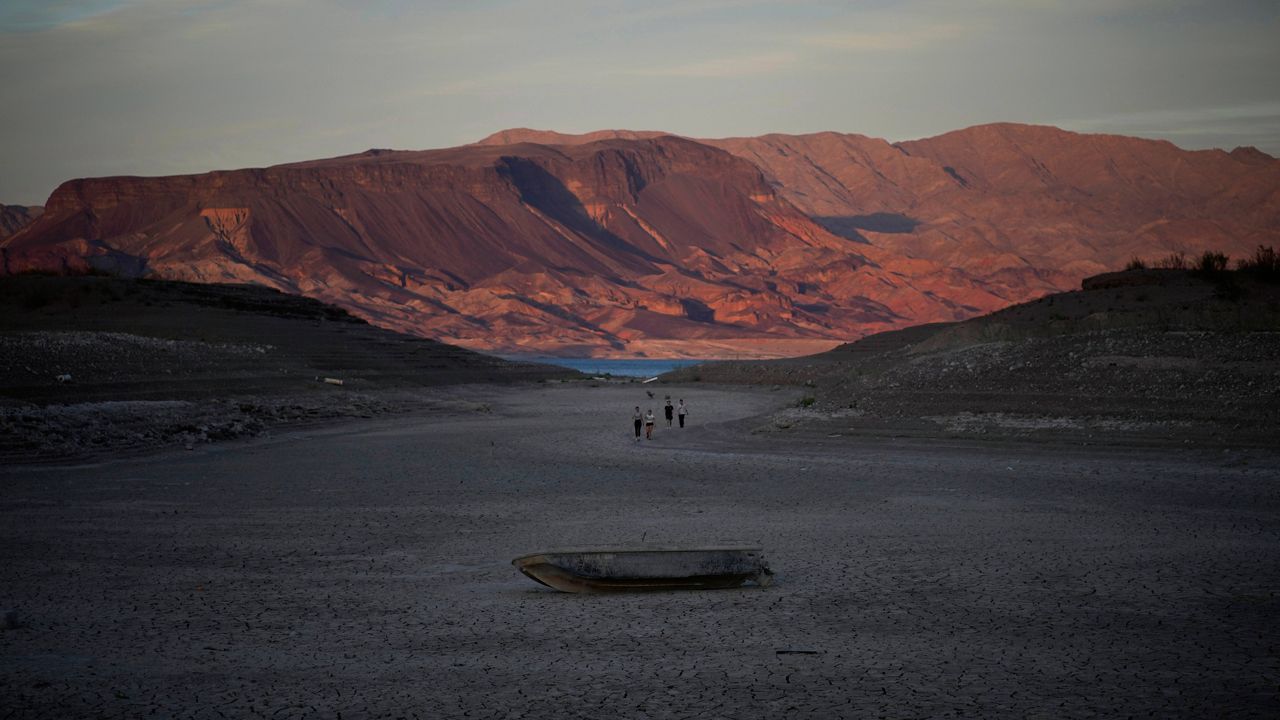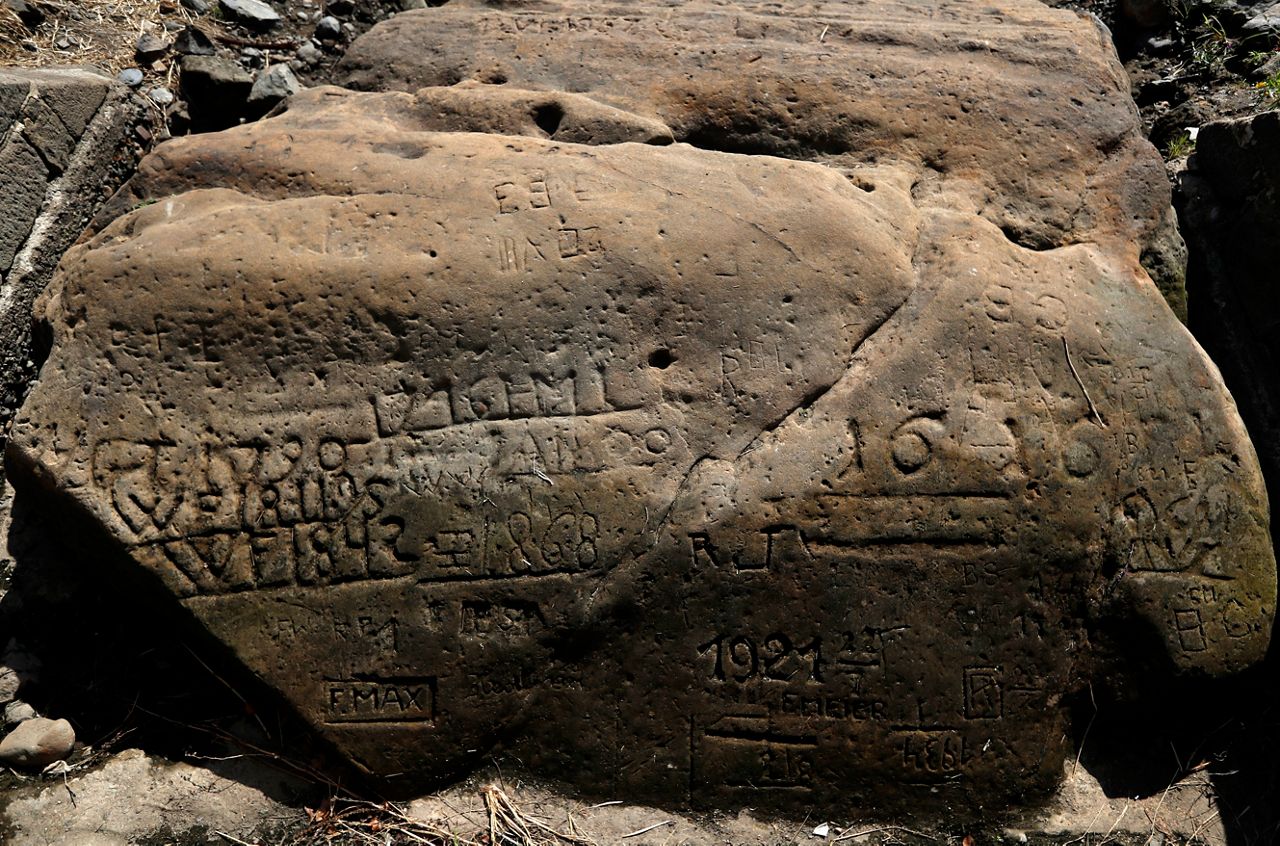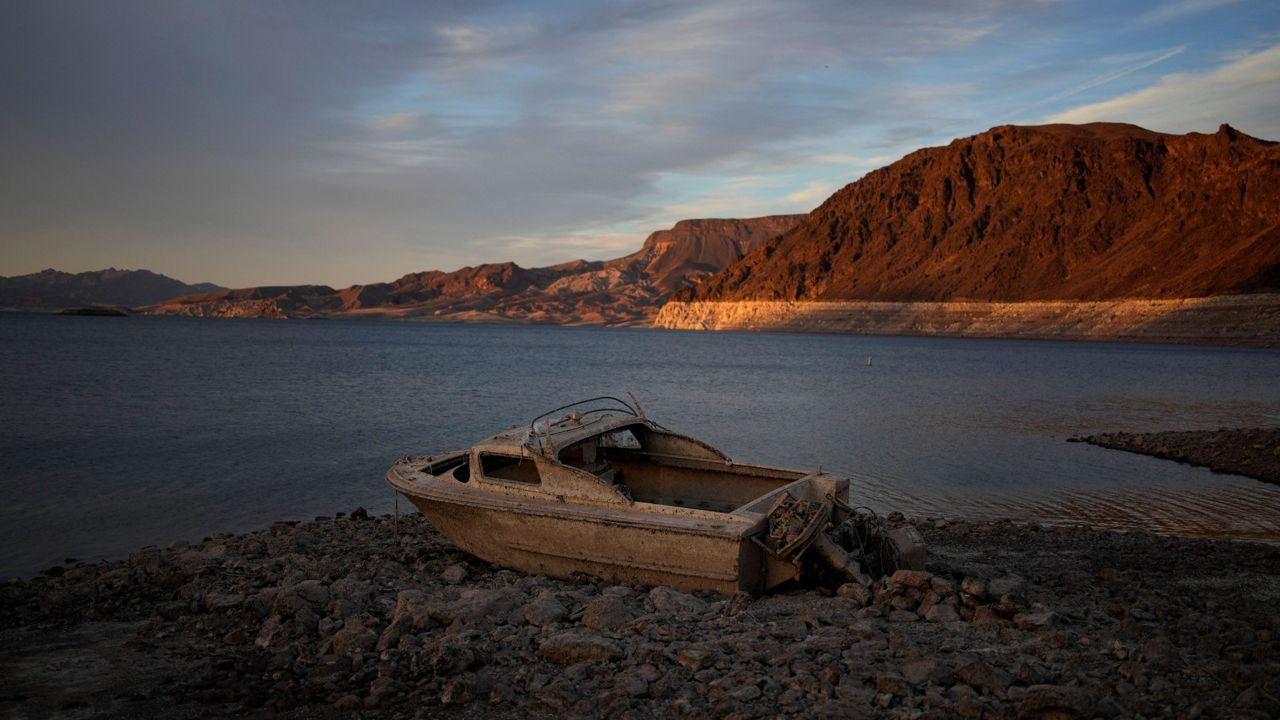From southwestern China to Texas' Paluxy River, the world is feeling the impact of a changing climate, with severe droughts hitting much of the world.
But amid those extreme events – and in some cases, because of them – have emerged some fascinating historical relics.
In southwestern China, hundreds of persimmon trees that should be loaded with yellow fruit lie wilted in Gan Bingdong’s greenhouse, adding to mounting farm losses in a scorching summer that is the country’s driest in six decades.
In the United States – for the second year in a row – Arizona and Nevada will face cuts in the amount of water they can draw from the Colorado River as the West endures more drought.
And Europe earlier this summer experienced record-breaking temperatures, with temperatures rising above 40C (104F) in England in mid July.
From dinosaur tracks in Texas to “hunger stones” in Europe, here are a few historical artifacts uncovered because of the changing climate.
A large set of footprints were unearthed in Texas’ Dinosaur Valley State Park after severe droughts dried up the lakebed of the Paluxy River.
Most of the tracks in the park belong to either a theropod – a type of carnivorous dinosaur classified by its hollow bones and three-clawed limbs – called Acrocanthosaurus or a sauropod – a type of dinosaur identified by its long neck and four-legged gait – called Sauroposeidon.

The tracks uncovered by this year’s drought likely belong to Acrocanthosaurus, a spokesperson for the Texas Parks and Wildlife Department told Spectrum News in an email. As an adult, the dinosaur would have weighed around seven tons and stood about 15 feet tall.
Those tracks will likely be re-submerged in the near future, as Texas is expected to get more rain.
“With rain in the upcoming forecasts, it is anticipated that the tracks uncovered during the drought will soon be buried again,” the park spokesperson said. “Tracks being buried under layers of sediment do help protect them from natural weathering and erosion.”
Nevada’s Lake Mead is at its lowest levels since 1937 – and those historically low water levels have revealed numerous skeletal remains of human bodies and power boats this summer.
At least five sets of human remains have been identified in the lakebed in recent months. The most recent discovery came in mid-August, when the National Park Service responded to reports of remains at the Swim Beach area of the lake, saying rangers “set a perimeter to recover the remains with the support from Las Vegas Metropolitan Police Department’s dive team.” No further information about the remains have been released, and the investigation into the individual is ongoing.

More and more human remains have been discovered as Western drought forces the shoreline to retreat at the shrinking Colorado River reservoir behind the Hoover Dam.
The fourth discovery was made just weeks ago at the beginning of August, when National Park Service officials said rangers were called to the reservoir between Nevada and Arizona around 11 a.m. on a Saturday after skeletal remains were discovered at the same Swim Beach.
On May 1, a barrel containing human remains was found near Hemenway Harbor. Police believe the remains were that of a man who died from a gunshot wound and the body was likely dumped in the mid-1970s to early 1980s.
Less than a week later, authorities say human skeletal remains were found at Calville Bay.
More recently, partial human remains were found in the Boulder Beach area on July 25.
Police have speculated that more remains may be discovered as the water level at Lake Mead continues to recede.
The discoveries have prompted speculation about long-unsolved missing person and murder cases dating back decades — to organized crime and the early days of Las Vegas, which is just a 30-minute drive from the lake.
With Europe in the midst of its worst drought in possibly centuries, many rivers have begun to dry up – including the Danube, which passes through ten countries in central and southeastern Europe.
In mid-August, dozens of sunken German warships dating back to World War II were exposed by the receding waters near the town of Prahovo in Serbia, as was first reported by Reuters. The warships came from Nazi Germany’s Black Sea fleet, which attempted to retreat from Soviet forces down the Danube in 1944.
Some of the ships – which have made the already shrinking waters of the Danube even less navigable with their wreckage – still contain live ammunition and explosives, according to Reuters. Authorities in Serbia have started dredging to keep vessels moving.
Engraved markings, etched into stones hundreds of years ago in previous seasons of severe drought, have begun to resurface in the Elbe River and others in Germany and bordering countries.
Some date back to recent years; according to Reuters, rocks in Frankfurt and Rheindorf are inscribed with 1947, 1959, 2003 and 2018.

The low level of water caused by the recent drought has exposed some stones at the river bed whose appearances in history meant for people to get ready for troubles.
And some contain more concerning carvings, and even a warning. One, seen at the Czech town of Děčín near Germany’s border, has this message, translated per The Guardian: “If you see me, then weep.” The earliest legible date on that stone appears to be 1616, though carvings from droughts as early as the 1400s may have eroded over time.
The Associated Press contributed to this report.



